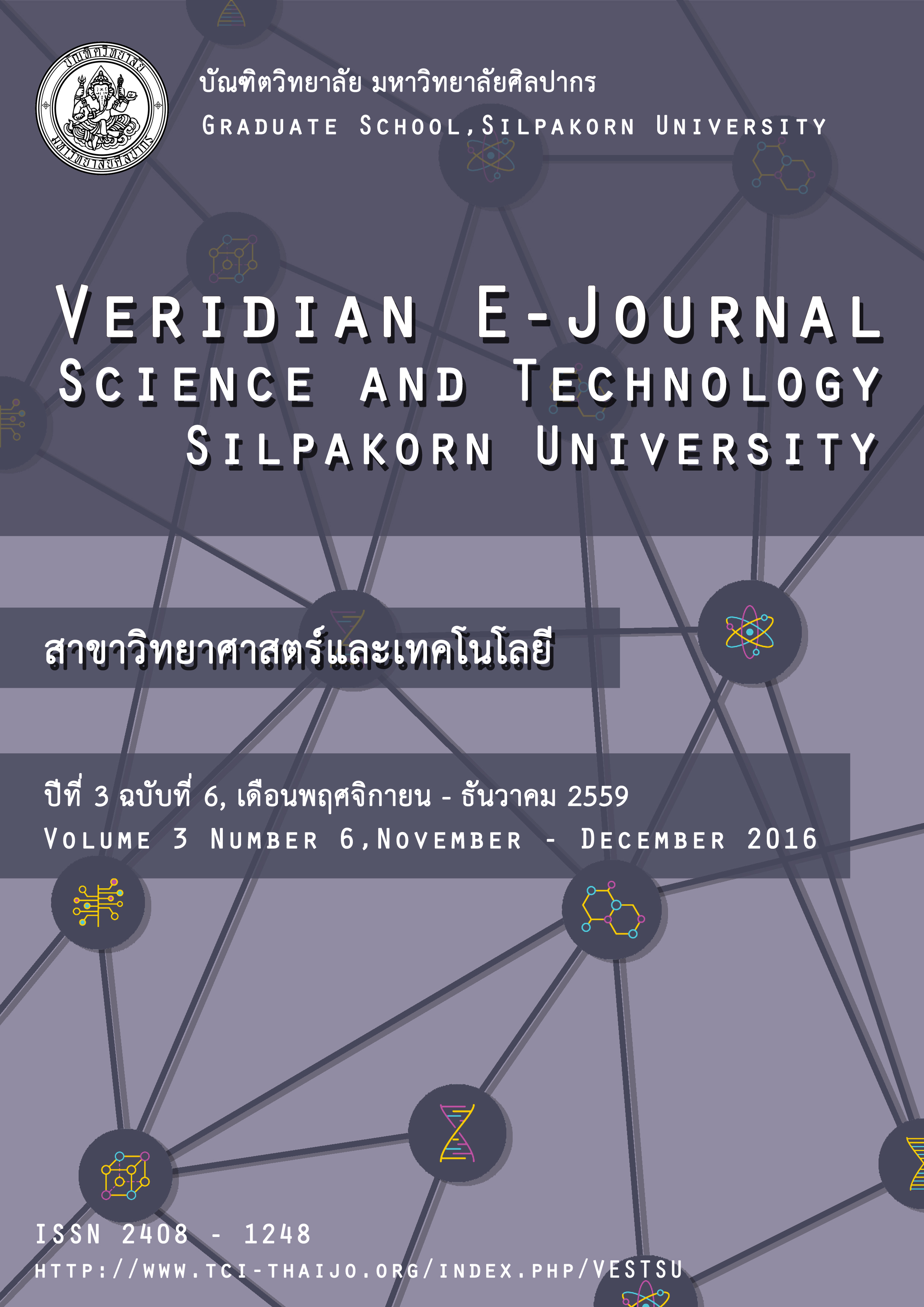Studies on the Cellulose Extraction and Film Preparation from Coconut Meat Residue
Main Article Content
Abstract
The project aims to study cellulose extraction of coconut meat residue (CMR) The method was performed in 3 steps:
1. Lignin extraction by refluxing in 4% w/v NaOH to obtain CMR-1
2. Oxidation by refluxing in 0.5 M K2S2O8 to obtain CMR-2
3. Acid hydrolysis by refluxing in 6 M H2SO4 to obtain CMR-3
The extracted cellulose was totally washed and dry at 50 °C. CMR-1, CMR-2 and CMR-3 were further analyzed by scanning electron microscopy, Fourier transformed infrared spectroscopy, thermogravimetric analysis and X-ray diffraction. From SEM analysis, the cleaner and finer fibers were obtained after being hydrolyzed by acid. The FT-IR spectra of all CMR samples show the characteristic absorption peaks of cellulose and also the presence of carboxylic groups at 1750 and 1655 cm-1. The TGA data showed that the start temperature in the cellulose degradation region was decreased as the number of extraction steps was increased. The highest crystallinity was obtained in CMR-3. For film preparation, CMR-3 was mixed with 1% sodium alginate solution and subsequently stirred for 6 hours to obtain homogeneous solutions. The solution was poured into the petri dish and left in the oven at 50 ºC for 6 hours to obtain the CMR film. It was then analyzed by scanning electron microscopy, thermogravimetric analysis and X-ray diffraction. SEM image showed the good homogeneity of the CMR film. The thermal stability of cellulose in the film was increased as evidenced from TGA data. While the crystallinity of cellulose in CMR film was decreased significantly.

